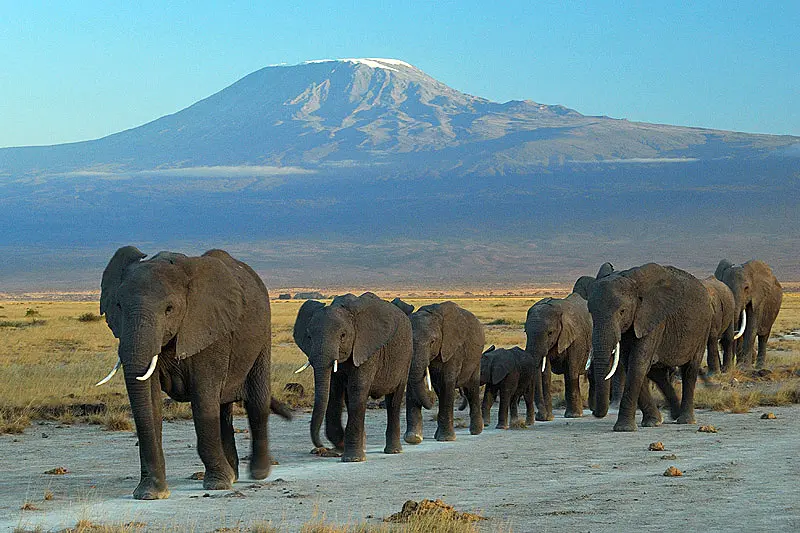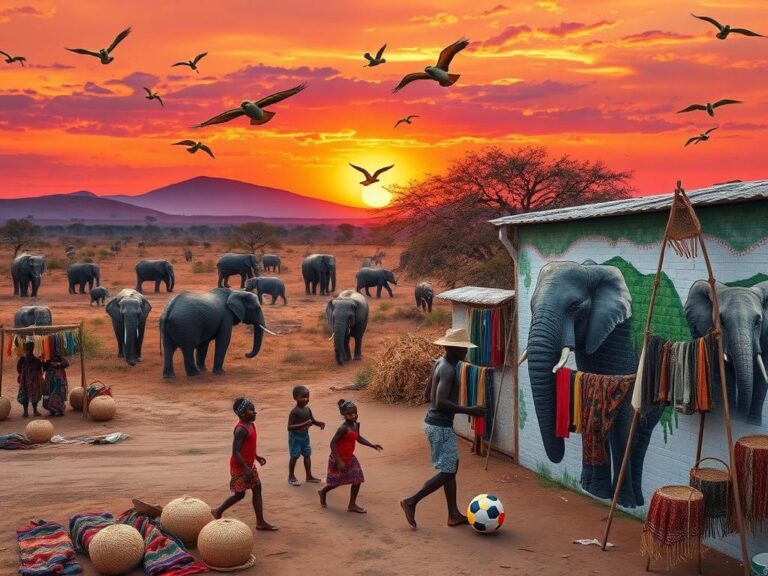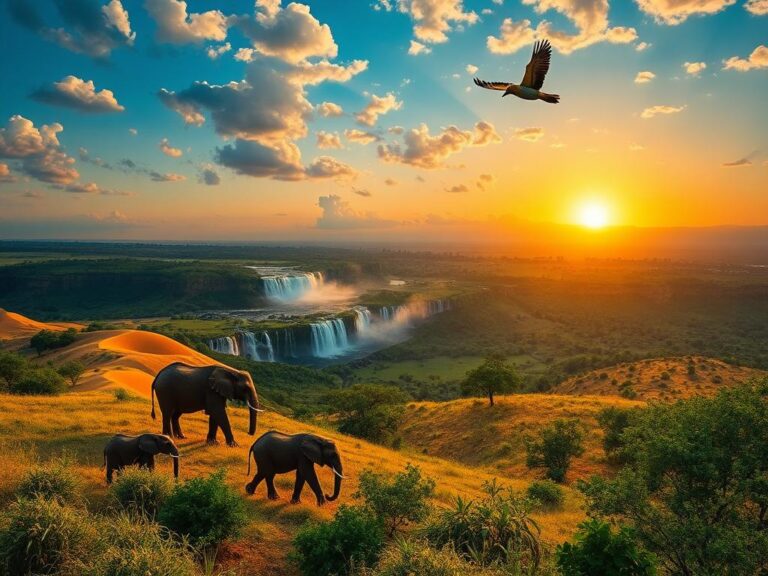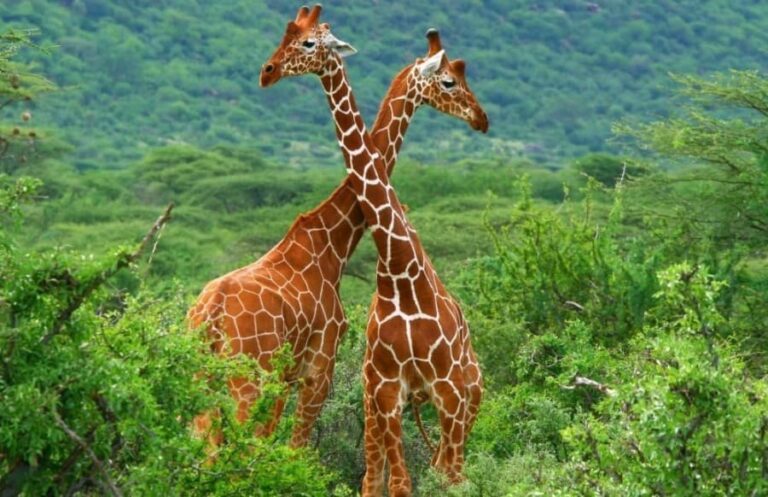
Best Time to Travel to Kenya and Tanzania: A Comprehensive Guide
Best time to travel to Kenya and Tanzania is a crucial consideration for any avid traveler eager to experience the breathtaking wildlife, stunning landscapes, and vibrant cultures these two East African nations have to offer.
With contrasting seasons, weather patterns, and wildlife migration trends, knowing the optimal time to visit can significantly enhance your experience. This article delves deep into the best periods for travel to Kenya and Tanzania, highlighting specific months that are especially favorable for wildlife viewing, photography, and cultural interactions. Buckle up as we embark on this journey to uncover when the best time is to visit these magnificent destinations.
Understanding the Climate of Kenya and Tanzania
The climate in Kenya and Tanzania plays an essential role in determining the best time to travel to these countries.
Both countries experience a tropical climate, but they do have distinct wet and dry seasons. Typically, the dry seasons offer excellent wildlife viewing opportunities, while the wet seasons bring lush landscapes perfect for photography and birdwatching.
Knowing the climate specifics can help you plan accordingly. Here’s a breakdown of the prevailing seasons:
- Wet Season: Rains can be long and heavy, particularly between April and May, with another shorter rainy period usually occurring in November.
- Dry Season: Generally spans from June to October, presenting the best time for game drives where animals congregate around water sources.
January to February – The Dry Season Begins
January to February is one of the best times to visit Kenya and Tanzania due to optimal wildlife viewing opportunities.
As the dry season begins, you’ll find that game parks are less crowded compared to peak months, providing a more exclusive experience.
Animals congregate around water sources, which significantly enhances your chances of sightings. Imagine witnessing majestic elephants and graceful giraffes quenching their thirst in the warm sun!
Many travelers swear by this time of year, citing the comfort of milder temperatures and lower humidity as a significant appeal.
March – Short Rainy Season
March marks the transition into the short rainy season.
While it can be wet, this time also brings lush landscapes that photographers rave about.
The visual transformation of the environment during this period is genuinely breathtaking.
It’s a wonderful time for those who prioritize photography; the vibrant colors and dramatic skies provide endless opportunities for stunning captures.
Moreover, tourist numbers are still relatively low compared to later months, making it an ideal time for a serene safari experience.
April to May – Long Rains
April to May brings substantial rainfall, which might deter some travelers.
However, for budget-conscious adventurers, this period holds considerable appeal.
Accommodation prices dip significantly, offering great deals for quality lodgings.
With fewer tourists around, you can enjoy an intimate experience with nature.
Those who venture out will appreciate the fresh, green landscapes and the chances to encounter newborn wildlife.
During this season, the Serengeti sees fewer visitors, allowing for a deeper connection with the wild.
June – Mild and Dry
By June, the rains tend to taper off, making way for a mild and dry climate.
This shift provides a fantastic opportunity for game watching as wildlife becomes increasingly active after the wet season.
Animals begin grazing in abundance and can be seen roaming the plains with their young.
Australian artist John Worsfold beautifully encapsulated this time with his quote: “Nature has a way of refreshing itself after a good rain.”
June is pure magic for wildlife lovers, as each encounter becomes a story worth telling.
July to October – The Great Migration
The period between July and October is arguably the most popular time to visit Kenya and Tanzania.
This time of year offers witness to the Great Migration, a truly awe-inspiring event where thousands of wildebeest and zebras make their arduous journey across the Serengeti.
This spectacle creates breathtaking sights that attract nature lovers from all around the globe.
However, with increased popularity comes larger crowds—something to remember when planning your trip.
Those who prefer a solitary experience amidst the chaos may want to consider visiting during the earlier months when the migration is just revving up!
August – Peak Safari Season
August signifies the peak safari season in both countries.
As the driest month, this time frame offers pristine conditions for game drives and ensures that animals come out of hiding.
Although you can expect to see more tourists during this period, the unbelievable wildlife encounters are undeniably fulfilling.
Consider booking your accommodations well in advance, as they fill up quickly for the high season, especially if you are aiming for specific lodges or experiences.
September – Perfect Weather and Wildlife Viewing
September stands out for its excellent weather and wildlife visibility.
This month often coincides with calving season in Kenya, giving you a chance to see adorable baby animals take their first steps.
Wildlife enthusiasts cannot help but gawk at how beautiful the scenery and interactions are during this period.
Additionally, the pleasant weather allows for extended exploration, as temperatures remain comfortable throughout the day.
October – Start of the Short Rains
October can be a fantastic time to visit, with many animals still active and fewer tourists.
While the short rains eventually arrive towards the end of the month, it doesn’t usually hamper wildlife viewing.
Many travelers appreciate seeing landscapes shift into brilliant shades as the rains sweep over the region, making it an excellent time for photographers.
November – Short Rains Continue
November is quite interesting, too.
While the rain can disrupt travel plans, it is also an excellent opportunity for budget travelers looking to save.
The wildlife is still abundant, while the stunningly green landscapes add a unique allure to your safari adventures.
Although it’s a quieter travel period, great experiences await if you’re willing to brave some online moody weather.
December – Holidays and Family Travel
December offers tremendous wildlife viewing opportunities, coinciding with school holidays and family travels.
Travelers should be advised to book well in advance, as accommodations tend to fill up quickly during this festive time.
Families seeking unforgettable experiences and new traditions often flock to Kenya and Tanzania for their holiday getaways.
The beauty of nature during this period makes it possible to create memorable stories to share over winter holiday meals once back home.
Conclusion
Properly timing your trip to Kenya and Tanzania can greatly enhance your experience.
Understanding the best times to travel allows you to maximize wildlife encounters, enjoy stunning landscapes, and immerse yourself in the vibrant cultures of these remarkable countries.
Whether it’s the awe of the Great Migration or the lush beauty during short rains, each season offers unique opportunities.
By considering the insights shared in this article, you can craft the perfect itinerary tailored to your preferences.
FAQ
When is the best time to visit Kenya and Tanzania for wildlife viewing?
The best time for wildlife viewing is during the dry months, specifically from July to October, when the Great Migration occurs and animals cluster around water sources.
Is it safe to travel during the rainy season?
Yes, traveling during the rainy season, particularly in April and May, can be safe and offers fewer crowds along with lower prices, but ensure you are prepared for wet conditions.
What wildlife can you expect to see during the various seasons?
You can expect to witness various animals depending on the season, such as baby animals in September, the Great Migration in July and August, and lush landscapes in March and October.
How can I get the best deals on accommodations?
You can find great deals on accommodations during the long rainy season (April and May) when tourist numbers are lower and prices drop significantly.
Should I book my safari in advance?
Yes, it is advisable to book your safari in advance, especially during peak seasons (July and August) when popular lodges fill up quickly.
With this comprehensive knowledge about the best time to travel to Kenya and Tanzania, readers can confidently plan their adventure and enjoy an unforgettable experience!
Feel free to share your thoughts, experiences, or questions in the comments section below. Your adventure awaits!


